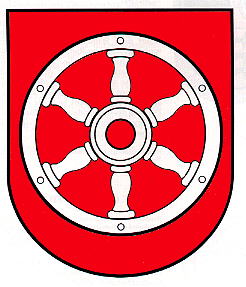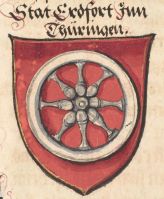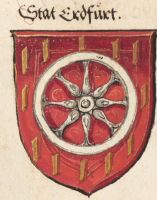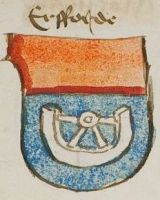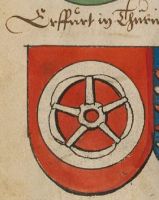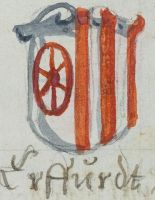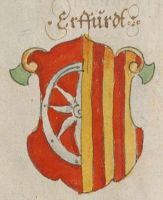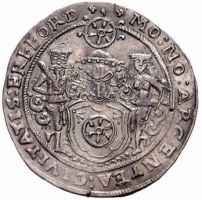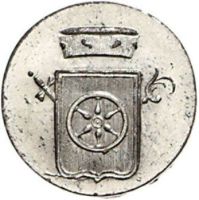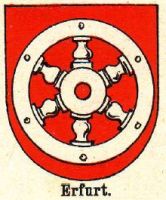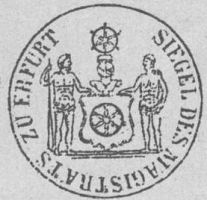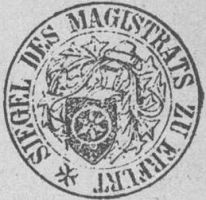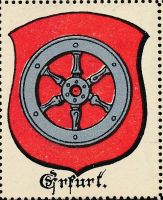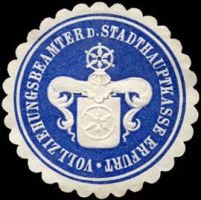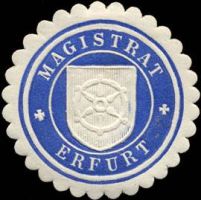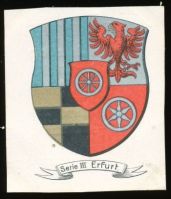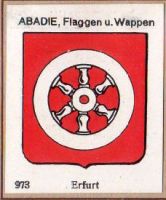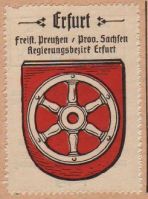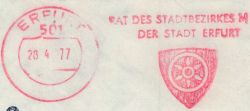Erfurt: Difference between revisions
Knorrepoes (talk | contribs) m (Text replacement - "{{media1}}" to "{{media}}") |
Knorrepoes (talk | contribs) m (Text replacement - "<gallery widths=250px heights=200px perrow=0>↵" to "===Image Gallery=== <gallery widths=250px heights=200px perrow=0> ") Tags: Mobile edit Mobile web edit |
||
| Line 29: | Line 29: | ||
The savages were no longer used in the late 19th century and occasionally in the early 20th century the helmet and crest were used. After 1918 the arms were no longer shown with the helmet and crest either. | The savages were no longer used in the late 19th century and occasionally in the early 20th century the helmet and crest were used. After 1918 the arms were no longer shown with the helmet and crest either. | ||
===Image Gallery=== | |||
<gallery widths=250px heights=200px perrow=0> | <gallery widths=250px heights=200px perrow=0> | ||
File:Erfurt1500.jpg|alt=Wappen von Erfurt/Arms (crest) of Erfurt|The arms around 1500 | File:Erfurt1500.jpg|alt=Wappen von Erfurt/Arms (crest) of Erfurt|The arms around 1500 | ||
Revision as of 07:52, 1 September 2023
ERFURT
State : Thüringen
Urban District (Kreisfreie Stadt) : Erfurt
Additions : 1911 Ilversgehofen; 1938 Hochheim, Melchendorf; 1950 Bindersleben, Bischleben-Stedten, Dittelstedt. Gispersleben, Marbach, Möbisburg, Rhoda, Schmira; 1994 Alach, Azmannsdorf, Büßleben, Egstedt, Ermstedt, Frienstedt, Gottstedt, Hochstedt, Kerspleben, Kühnhausen, Linderbach, Mittelhausen, Molsdorf, Niedernissa, Rohda, Salomonsborn, Schaderode, Schwerborn, Stotternheim, Tiefthal, Töttelstädt, Töttleben, Urbich, Vieselbach, Wallichen, Waltersleben, Windischholzhausen
| German | In Rot ein sechsspeiehiges silbernes Rad. |
| English | blazon wanted |
Origin/meaning
The arms of the city of Erfurt show a silver wheel in red; these are the arms of the State of Mainz to which the city historically belonged until 1802.
The wheel appeared for the first time as symbol of the city since the early 15th century. The oldest images showed a wheel with eight spokes, but already in medieval times it was changed to the six spokes that are still used.
The oldest seal of the city dates from the late 12th century and shows St. Martin, the patron saint of the archdiocese of Mainz in a gate. Several later seals all showed the saint in different positions. Only in a small seal from 1646 the wheel appeared for the first time. Only from the middle of the 17th century the main seals of the city showed the arms with the wheel.
When the city became part of Prussia in 1804 a new seal was made, showing the arms with the wheel. The shield was held by two savages (one male, one female) and above the shield was a helmet and as a crest a wheel with peacock feathers. A second seal with a similar design was made in 1843.
The savages were no longer used in the late 19th century and occasionally in the early 20th century the helmet and crest were used. After 1918 the arms were no longer shown with the helmet and crest either.
Image Gallery
The arms in a 16th century manuscript
The arms in an album from around 1910
The arms in the Continentale Verlags-Anstalt album, +/- 1910
The arms in the Abadie albums
The arms in the Kaffee Hag albums +/- 1925}
Literature: Ulle, 1997
This page is part of the German heraldry portal |
Heraldry of the World |
|
German heraldry:
|
Selected collector's items from Germany:
|
Contact and Support
Partners:
Your logo here ?
Contact us
© since 1995, Heraldry of the World, Ralf Hartemink 
Index of the site
